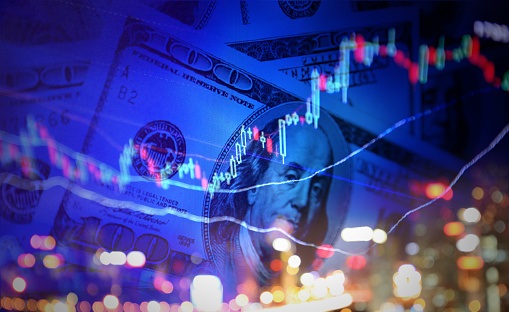Markets were shocked on Wednesday as the latest US Consumer Price Inflation report showed the YoY rate of headline inflation hitting its highest level since 1990 at 6.2%, amid a much larger than expected 0.9% MoM surge in prices. Much of this surge was driven by a sharp jump in food, energy and used car prices – these are highly volatile prices that can push higher or lower the headline rate of inflation based on temporary swings – but one of the most notable aspects of the latest inflation report was that it clearly showed a broadening of inflationary pressures across all sectors of the US economy. The core measure of YoY CPI surged to 4.6% (also roughly 30-year highs) amid a 0.6% MoM jump in prices. Notable gains were seen in very involatile subcomponents of the CPI, like housing and health costs.
The report delivered another blow to the Fed’s now seen as widely discredited stance that it has been espousing throughout 2021 that the current spike in inflation is merely transitory, before long, deflation will be a bigger worry for the bank, as was the case over most of the last decade. The bank has been saying that as inflationary base effects subside, as fiscal stimulus fades, as price jumps to do with reopening fade and as supply chain bottlenecks ease, inflation will on its own come back to the bank’s target. This is half true; those distortions to prices will ease over time, likely in 2022. But there is absolutely no guarantee that CPI then naturally comes back to the Fed’s target, because there is no reason to think there will be a reversal in the building of price pressures in sectors not impacted by these disruptions.
Furthermore, the US labour market is very tight, as shown in the fact that the demand for labour far exceeds the supply of it (there are around 5.5M unemployed persons in the US right now versus over 10M job openings). Quit rates are at multi-decade highs. That means wage growth has been very strong as employees compete for workers. Strong wage growth is inflationary and is unlikely to substantially subside, even if there is a modest increase in US labour supply heading in Q4 2021 and 2022. Meanwhile, companies are maintaining margins despite high input costs given that they are reporting their highest level of confidence in their ability to pass on costs these to consumers for decades.
The realisation that US inflation is set to remain elevated well above the Fed’s 2.0% inflation target for the foreseeable future (some economists forecast the headline rate surpassing 7.0% in the coming months) is slowly becoming the accepted line of thinking amongst analysts and market participants. US money markets, which saw dovish repricing last week after dovish Fed, ECB and BoE vibes, have again brought forward rate hike bets, with USD STIR markets pricing a first Fed hike in June. This has also helped to propel the US dollar to fresh year-to-date highs, with the DXY charging about 95.00.
Now we wait for the same realisation to dawn upon Fed members. Just this week, Fed members were talking about waiting until 2023 to lift rates. A hawkish pivot at some point seems inevitable. The risk that the bank opts to accelerate its QE taper in 2021 is high. As the Fed pivots hawkishly to address out of control inflationary pressures, this is likely to support the US dollar versus its major G10 and EM counterparts. A move in the DXY back towards 100.00 in 2022 is on the cards.




